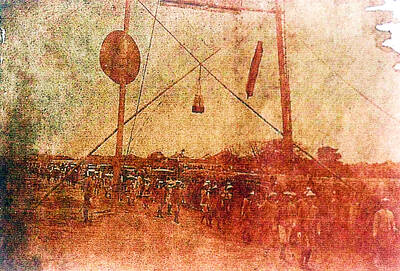In The Third Reich in Power, 1933-1939, the British historian Richard Evans picks up where he left off in The Coming of the Third Reich, the first installment of a three-volume history that is shaping up to be a masterpiece. Fluidly narrated, tightly organized and comprehensive, The Third Reich in Power explains, in thematic chapters, how Hitler, after gaining control of the German government in 1933, immediately set about transforming the national economy, purging enemies,reversing the humiliating terms of the Versailles peace treaty and imposing a nationalist-racist ideology on a less than receptive population.
That's a tall order, and Evans, as he carefully constructs a portrait of life in Germany under the Nazis, makes it clear that the Nazi program, in virtually every arena, met with only spotty success. He challenges the notion that Germany was, by tradition and history, uniquely susceptible to Hitler's message and totalitarian rule. Under the kaiser, he argues, Germany was in many respects a modern state, with universal male suffrage, a flourishing Social Democratic Party and a dynamic economy. The Nazis, in 1933, ruled a nation in which the Communists and Social Democrats had received nearly a third of the vote in recent elections.
All the more impressive, then, that the Nazi Party, in a few short years, transformed Germany into a police state and dragged it into a European war that most Germans feared and assumed would end badly. It was able to do this, moreover, at a fraction of the cost, in human lives, incurred in Soviet Russia. It is noteworthy that more members of the Politburo of the German Communist Party serving between 1920 and 1933 were killed by Stalin than by the Gestapo.

The Nazis benefited greatly from the inability of the Communists and Social Democrats to cooperate, and from the virtual carte blanche handed to them by the German people, traumatized by the social disorder and economic dislocations of the Weimar period. Always, no matter what the excesses of the regime, the non-Nazi alternatives seemed worse. And an overwhelming majority of Germans thrilled to the promise of a resurgent economy and a rearmed Germany that could command international respect.
The Nazis were at their most efficient in establishing a climate of fear and convincing average Germans that even chance criticisms would be picked up by the Gestapo's all-hearing ear. There was no such thing as a harmless joke. Schoolteachers, before grading essays, made sure to look over the main Nazi newspaper, fearful lest they criticize material that had been plagiarized from its articles.
It is one of history's oddities that Heinrich Mueller, the head of the Gestapo, once referred to Hitler as "an immigrant unemployed house-painter" and "an Austrian draft-dodger." In one of his many small corrections of the record, Evans notes that the Gestapo, contrary to legend, was not made up of fanatical Nazis. Most of its members were career policemen who had joined the force during the Weimar period or even earlier. Of the 20,000 Gestapo officers serving in 1939, only about 3,000 belonged to the SS.
The Nazis tried to transform every aspect of German life, from music to sports to garden design. ("Formality and foreign plants were out, and a natural look based on native German species was in.") Brownshirts confronted women on the street wearing too much makeup -- the new German woman was expected to rely on exercise to create a natural glow -- and sometimes snatched cigarettes from their painted lips. (Eva Braun, Hitler's mistress, defiantly smoked when the Fuehrer was not around, and freely used Elizabeth Arden cosmetics.)
Evans manages to weave a wealth of statistical information into a smooth narrative enlivened by eyewitness commentary from diaries, Gestapo reports and observations by Social Democratic opponents of the regime reporting to their colleagues abroad. This method works particularly well in his chapters on Nazi persecution of the Jews, which vividly convey the slow smothering of Jewish life, punctuated by episodes of fantastic violence, and the inexplicable double-think of ordinary Germans who stood by silently. Evans, here and throughout, maintains a dispassionate tone. He lets the facts, and the voices of the times, speak for him.
The attempt to refashion the German soul encountered resistance, mostly passive. As Evans points out, most Germans had formed their characters before the Nazis came to power. The Nazis made only limited headway in their confrontations with the Protestant and Roman Catholic churches. Constant bombardment from the propaganda ministry caused many Germans to tune their radio sets to foreign stations or retreat into a private, nonpolitical world. The average German quickly grew tired of constant political pestering and the ceaseless charity collections by Hitler Youth and brownshirts, which amounted to a quite substantial unofficial tax.
In the countryside, where tradition ran deep, local loyalties often trumped Nazi policy. In the Hessian village of Korle, storm troopers tried to seize bicycles from a club with ties to the Communist Party, but the local innkeeper, a longtime Nazi, said that the club owed him money, and that the bicycles therefore belonged to him. He stored the bicycles in his loft and returned them to their owners after the war. The Nazi machine, as Evans describes it, moved forward with a good deal of creaking and squeaking. The economy was no exception. On many fronts, the Nazis managed nothing more than to bring the economy back to the status quo that existed before the Depression. As late as January 1935, one estimate put the number of unemployed at more than 4 million, and food shortages were still a problem in 1939. Workers put in longer hours simply to stay even.
Even miserable stability looked good compared with the alternative: the hyperinflation, mass unemployment and uncertainty of the Weimar period. Most Germans did not realize, however, the dirty little secret to the German economic recovery, which, by the late 1930s, had reached its natural limits. The only way forward, in 1939, was war and foreign conquest.

Desperate dads meet in car parks to exchange packets; exhausted parents slip it into their kids’ drinks; families wait months for prescriptions buy it “off label.” But is it worth the risk? “The first time I gave him a gummy, I thought, ‘Oh my God, have I killed him?’ He just passed out in front of the TV. That never happens.” Jen remembers giving her son, David, six, melatonin to help him sleep. She got them from a friend, a pediatrician who gave them to her own child. “It was sort of hilarious. She had half a tub of gummies,

June 23 to June 29 After capturing the walled city of Hsinchu on June 22, 1895, the Japanese hoped to quickly push south and seize control of Taiwan’s entire west coast — but their advance was stalled for more than a month. Not only did local Hakka fighters continue to cause them headaches, resistance forces even attempted to retake the city three times. “We had planned to occupy Anping (Tainan) and Takao (Kaohsiung) as soon as possible, but ever since we took Hsinchu, nearby bandits proclaiming to be ‘righteous people’ (義民) have been destroying train tracks and electrical cables, and gathering in villages

The wide-screen spectacle of Formula One gets a gleaming, rip-roaring workout in Joseph Kosinski’s F1, a fine-tuned machine of a movie that, in its most riveting racing scenes, approaches a kind of high-speed splendor. Kosinski, who last endeavored to put moviegoers in the seat of a fighter jet in Top Gun: Maverick, has moved to the open cockpits of Formula One with much the same affection, if not outright need, for speed. A lot of the same team is back. Jerry Bruckheimer produces. Ehren Kruger, a co-writer on Maverick, takes sole credit here. Hans Zimmer, a co-composer previously, supplies the thumping

Swooping low over the banks of a Nile River tributary, an aid flight run by retired American military officers released a stream of food-stuffed sacks over a town emptied by fighting in South Sudan, a country wracked by conflict. Last week’s air drop was the latest in a controversial development — private contracting firms led by former US intelligence officers and military veterans delivering aid to some of the world’s deadliest conflict zones, in operations organized with governments that are combatants in the conflicts. The moves are roiling the global aid community, which warns of a more militarized, politicized and profit-seeking trend